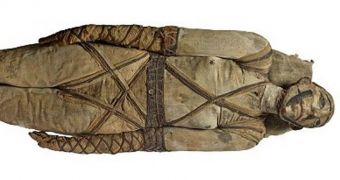Here is a fairly peculiar piece of news that might make raise some eyebrows and that some might want to read while listening to Aerosmith's “Dude Looks Like a Lady.”
The news in question is about an Egyptian mummy believed to date back to the 2nd century AD and that researchers first assumed was of a woman.
However, recent investigations have shown that, despite its rather ample bosom and generous hips, this mummy actually hides the remains of a man who lived centuries ago.
Daily Mail tells us that the Egyptian mummy arrived at the British Museum in the United Kingdom back in 1835, and was referred to as the “dancing woman” for several decades.
The mummy earned this nickname thanks to its curves and also due to the fact that, at the time it was delivered to the British Museum, it was placed inside a woman's coffin and was wearing a skirt.
Granted, the mummy did have a beard drawn on its face, but this feature proved not enough to make people at least consider the possibility of changing its moniker.
The same source informs that the mummified remains were found to be that of an adult man with the help of CT scanner that revealed that its lumps and bumps were no more and no less than bundles of cloth.
Specialists suspect that the man was fairly plump at the time of its death, and that whoever took care of embalming him saw fit to add these bundles of cloth to ensure that the mummy would resemble him for many years to come.
“There was a deliberate attempt to create his appearance and it may be that it was done because he was overweight,” John Taylor with the British Museum has told the press in a recent interview.
Furthermore, “It is a highly unusual mummy altogether, with the arms, legs fingers and toes separately wrapped rather than the whole body being cocooned in material. There are only a handful of other mummies like him in the world.”
The man is believed to have been about 20 years old when he died, and evidence indicates that he was no stranger to poor health. In fact, specialists say that he was likely suffering from several dental abscesses when he passed away.
Judging by the patience that the embalmer took with its body, and also taking into account that a golden leaf was found on its body, chances are that the man was part of a high-status family.

 14 DAY TRIAL //
14 DAY TRIAL //